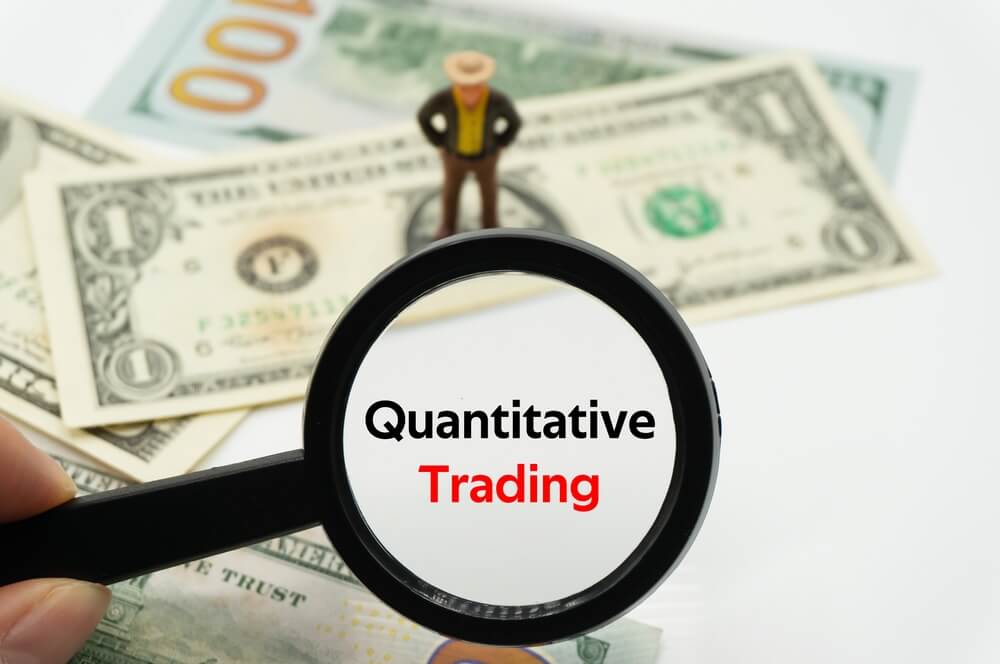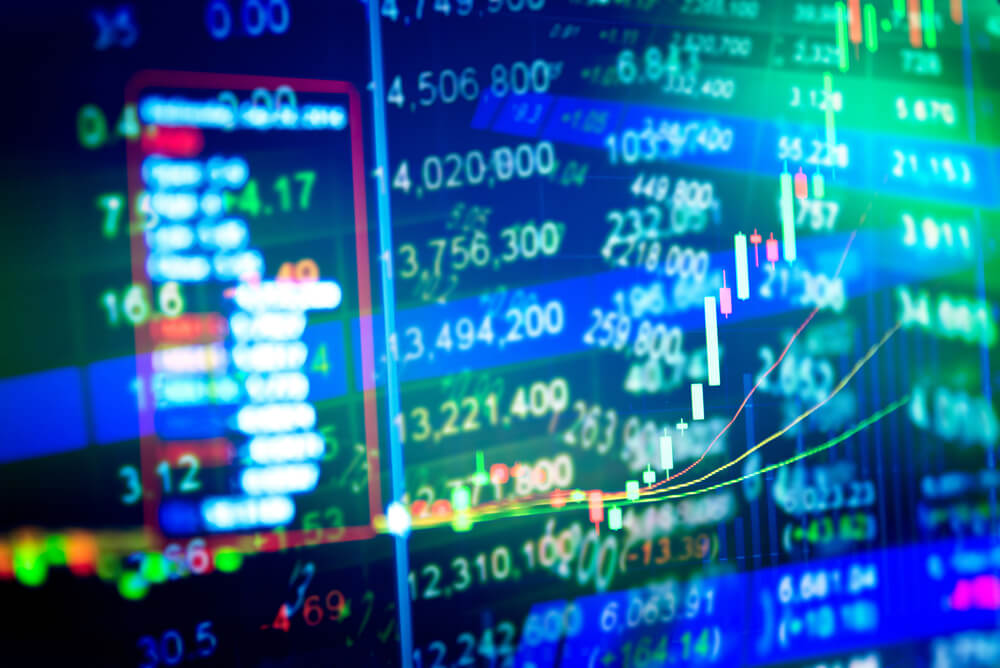
What is quantitative trading, and how does it work exactly?
Key Takeaways:
- Quantitative trading employs mathematical models and computer algorithms for efficient strategy execution.
- Traders utilize statistical models, machine learning algorithms, and backtesting techniques to identify and capitalize on trading chances.
- The financial landscape has been transformed by data science and automation, replacing outdated practices with innovative approaches.
- Success in quantitative trading hinges on advanced software skills, proficiency in programming languages, and a strong mathematical background.
Have you ever thought about what quantitative trading is? How does this type of trading work nowadays in the dynamic world of financial markets?
Today, we use math and algorithms to understand the world while employing data analysis to solve complex problems. Quantitative trading is becoming more popular, moving away from Wall Street brokers who talk fast in financial markets.
Instead, the finance sector has evolved into a diverse environment. Graduates with skills in math, statistics, computer science, engineering, and economics work together. They use algorithms and data analysis to progress and innovate.
Let’s start by explaining quantitative trading and how it works today.
Understand Quantitative Trading
Quantitative trading, or quant trading, involves using mathematical models and computer algorithms to execute trading strategies efficiently. These strategies aim to capitalize on trading opportunities by analyzing historical market data.
One common application is market making, where traders provide liquidity to the market by easing buying and selling activities.
Quantitative trading is crucial in finance, helping traders profit from market fluctuations. It involves using computer algorithms and math models to identify and capitalize on trading chances.
Quantitative trading, or quant trading, uses computer algorithms and math models to find and exploit trading opportunities.
What does it involve?
Individuals with backgrounds in finance and computer science have recently moved into trading roles, utilizing their knowledge of machine learning algorithms and regression analysis. This allows them to make well-informed decisions and forecasts in financial markets.
In the past, traders would meet face-to-face to negotiate securities with market makers. Nowadays, analyzing historical data to uncover profitable opportunities involves employing diverse trading methods like high-frequency, algorithmic, arbitrage, and automated trading. Effective risk management is crucial throughout this process.
Who is a quantitative trader?

A quantitative trader is a specialized individual who employs mathematical and quantitative techniques to evaluate financial products or markets.
In doing so, they identify trading prospects, assess potential risks, and prioritize effective risk management.
What is the Profile of a Quant Trader like?
Quant traders work in trading firms of different sizes, from small local ones to large global entities. They receive good pay and bonuses based on trading profits.
They usually work at trading desks in big investment banks, hedge funds, arbitrage firms, or smaller local trading companies.
To become a trader at a large company, you usually need a specialized master’s degree in a quantitative field, such as an MBA, PhD, or CFA. However, if you have extensive trading experience, you may not need a specialized degree.
New quants may begin at small firms or as junior analysts and move up in this competitive field over time.
What skills and qualifications should a quant trader have?
In addition to expertise in finance, mathematics, and computer programming, quants should possess the following skills and qualifications:
- Strong computer skills
- Proficiency in one or more programming languages
- Familiarity with data feeds and their application
- Proficiency in data mining, research, and analysis
- A willingness to take risks and a trader’s mentality
- An innovative approach to discovering new strategies and opportunities.
- Ability to develop and customize trading systems and automate processes.
Quant Trader Responsibilities
Here are some of the most prominent quant trader responsibilities nowadays:
- Develop trading strategies, from basic price-volume analysis to complex mathematical models.
- Build and refine operational algorithms based on chosen strategies.
- Validate prototypes through backtesting and adjust as needed using historical or live data.
- Integrate risk management measures such as scenario analysis and stop-loss mechanisms.
- Execute trading systems using live feeds and continually optimize for profitability.
- Research and develop new trading strategies.
Also, they collaborate with the research department, sharing trading insights with colleagues.
In an environment where statistical models are utilized, quant traders labour tirelessly within an increasingly automated market.
Here, human endeavours are dedicated to crafting algorithms aimed at outperforming rivals. With the continuous evolution of automation, the significance of efficiency heightens amidst diminishing profit prospects.
What are the main Quant Trader Tools?

Quant traders use their algorithms on real-time data containing prices and quotes. They need to know how to use platforms that provide data feeds and information. Quant traders usually use:
- Bloomberg data terminal has tools for analyzing data, like Bollinger bands and charts for technical and quantitative analysis. These platforms also allow regression models and standard deviation analysis to understand market trends across various financial instruments over different periods.
- Computers with programming languages like Perl, C++, Java, and Python are commonly used among traders. These computers help quants develop and use algorithms that incorporate regression models and standard deviation analysis to find profitable trading opportunities.
- Accessing historical and current data is crucial for testing strategies and grasping market trends across various time frames.
- Automated access to trading accounts, such as Direct Market Access (DMA), allows quants to execute strategies efficiently. This is done by analyzing market trends and dependent variables that can impact the outcome.
What is vital to understand in quantitative trading?
Understanding regression theory and time-series analysis is vital in quantitative trading. Techniques like Fourier analysis and wavelet analysis from electronic engineering also play a crucial role.
Because these ideas are complex and not taught in undergraduate programs, it is important to continue education, especially with a Ph.D.
Coding Languages for Quants
C++ and Java are the primary programming languages used in trading systems. Quants need to know C++ and be familiar with R, MatLab, Stata, Python, and Perl to analyze and create trading strategies.
How Has Quantitative Trading Changed Over Time?
In the past, traders and market makers would meet in person to discuss securities, prices, and quantities directly. Physical attributes such as a commanding voice and presence were highly valued among aspiring traders.
Digital markets have replaced physical trading floors, leading to a new era dominated by tech-savvy individuals. Abundant data points facilitate this transition, simplifying the transition to online trading platforms.
Revolutionizing Trading with Data Science and Automation
Trading has undergone a significant transformation with the advent of Data Science and Automation. The expansion of online markets has presented traders with abundant opportunities and vast information to capitalize on.
This has led to more data analysis and the development of automated trading systems.
This shift has completely revolutionized trading methodologies, replacing outdated practices with innovative approaches.
These new strategies harness machine learning, regression models, and computer programming to adapt to a wide range of market conditions.
High-frequency trading and backtesting are important parts of modern trading strategies. They require a lot of time and resources to learn and use effectively.
Data science plays a pivotal role.

Data science is crucial in understanding digital markets and seizing emerging trading opportunities. There has been significant change in recent decades.
Professionals with advanced finance and computer science degrees are increasingly entering traditional trading roles.
They use math and computer programs to predict how different investments will do in the future.
Employing natural languages and sophisticated machine learning models enables them to conduct comprehensive data analytics, facilitating well-informed decisions in trading.
What are the steps to Become a Quant trader?
Many companies need a master’s or Ph.D. in math, economics, finance, or statistics to become a quant trader. Master’s degrees in financial engineering or computational finance can also serve as effective entry points into this field.
For those with an MBA degree, a strong mathematical or computational skill set is crucial, along with solid real-world experience, to secure a position as a quant trader.
Advanced software skills are a huge plus.
In addition to educational qualifications, quant traders must possess advanced software skills. High-speed trading programs use C++, while programs like MATLAB, SAS, and S-PLUS are used for analyzing statistics offline.
Pricing expertise might also be incorporated into trading software created using Java, .NET, or VBA, often integrated with Excel.
How much do quant traders at hedge funds earn?
Quant traders working at hedge funds typically earn the highest salaries. In 2020, Selby Jennings conducted a survey.
The findings showed that a PhD graduate in a STEM field could receive compensation ranging from $300,000 to $400,000, encompassing salary and bonuses when employed at a leading hedge fund or independent trading company.
Bottom line
Quantitative trading leverages math, computer algorithms, and data analysis to reshape financial markets. Quant traders analyze trends and make informed decisions to capitalize on trading opportunities.
Over a certain amount of time, as traditional methods evolve, quant traders play a vital role in adapting to market changes and maximizing profits.




